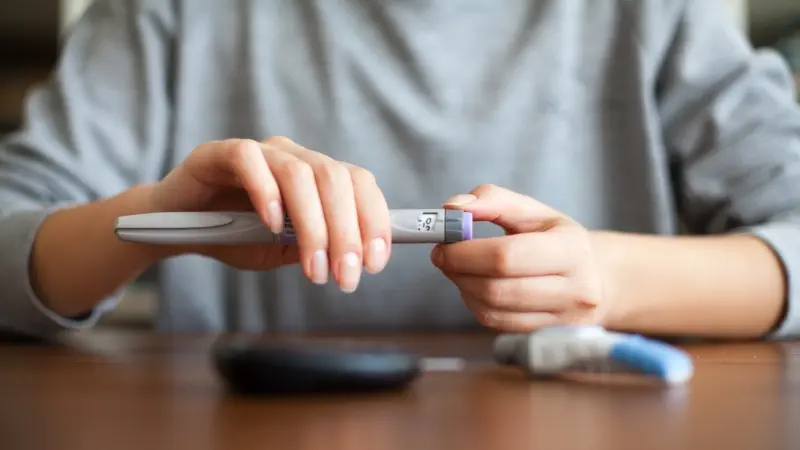Exploring Injectable Diabetes Medications: Injectable Options for Managing Diabetes
Injectable medications play a significant role in the management of diabetes, particularly for individuals with type 1 diabetes or type 2 diabetes who require additional treatment beyond oral medications.
These injectable options include insulin and non-insulin injectable medications. In this comprehensive article, we will explore the different types of injectable diabetes medications, their mechanisms of action, and their role in diabetes management.
1. Insulin
Insulin is a hormone produced by the pancreas that regulates blood sugar levels by facilitating the uptake of glucose into cells. People with type 1 diabetes and some with type 2 diabetes require insulin injections to replace the insufficient or absent insulin production in their bodies. Insulin is available in various forms, including:
- Rapid-acting insulin: This type of insulin starts working quickly and has a short duration of action. It is typically taken just before meals to manage the rise in blood sugar levels after eating.
- Short-acting insulin: Similar to rapid-acting insulin, short-acting insulin is taken before meals but has a slightly longer duration of action.
- Intermediate-acting insulin: Intermediate-acting insulin provides a more prolonged effect and helps maintain blood sugar control between meals and overnight.
- Long-acting insulin: Long-acting insulin provides a basal level of insulin throughout the day, helping to keep blood sugar levels stable between meals and overnight.
- Premixed insulin: Premixed insulin combines rapid- or short-acting insulin with intermediate-acting insulin in specific proportions to provide both mealtime coverage and basal insulin.
Insulin injections are typically administered using insulin syringes, insulin pens, or insulin pumps.
2. Glucagon-like Peptide-1 (GLP-1) Receptor Agonists
GLP-1 receptor agonists are injectable medications used in the treatment of type 2 diabetes. They mimic the action of GLP-1, a hormone that stimulates insulin secretion and reduces glucagon production, leading to lower blood sugar levels.
GLP-1 receptor agonists also slow down stomach emptying, reduce appetite, and promote weight loss. These medications are administered once or twice daily via subcutaneous injections. Examples of GLP-1 receptor agonists include exenatide, liraglutide, dulaglutide, and semaglutide.
3. Amylin Analogues
Amylin analogues are injectable medications that mimic the action of amylin, a hormone produced by the pancreas along with insulin. Amylin helps regulate blood sugar levels by slowing down stomach emptying, reducing appetite, and suppressing glucagon secretion.
Pramlintide is the only amylin analogue available and is used in combination with insulin therapy for people with type 1 or type 2 diabetes.
4. Sodium-Glucose Cotransporter-2 (SGLT-2) Inhibitors
While SGLT-2 inhibitors are primarily available in oral form, one medication, empagliflozin, is also available as an injectable option for type 2 diabetes. SGLT-2 inhibitors work by blocking the reabsorption of glucose in the kidneys, leading to increased glucose excretion in the urine.
This mechanism helps lower blood sugar levels and promotes weight loss. Injectable empagliflozin is administered once weekly via subcutaneous injections.
5. Considerations and Individualized Treatment
The choice of injectable diabetes medication depends on various factors, including the type of diabetes, individual needs, medical history, treatment goals, and preferences.
Healthcare providers consider factors such as blood sugar control, weight management, risk of hypoglycemia, kidney function, and cardiovascular health when determining the most appropriate injectable medication for a person with diabetes.
It is essential for individuals using injectable medications to receive proper education and guidance from healthcare professionals on injection technique, timing, dosage, and monitoring blood sugar levels.
Regular communication with the healthcare team is crucial to ensure optimal diabetes management and adjust treatment plans as needed.
Conclusion
Injectable diabetes medications, including insulin and non-insulin options, are vital tools in diabetes management. Insulin is essential for people with type 1 diabetes and some with type 2 diabetes, providing necessary blood sugar control.
GLP-1 receptor agonists, amylin analogues, and SGLT-2 inhibitors offer additional injectable options for individuals with type 2 diabetes, promoting blood sugar control, weight management, and reducing the risk of complications.
Treatment plans should be individualized based on the specific needs of each person, and regular communication with healthcare providers is crucial to ensure proper injection technique, dosage adjustments, and monitoring.
With proper use of injectable diabetes medications, individuals with diabetes can effectively manage their condition and lead healthy, fulfilling lives.
